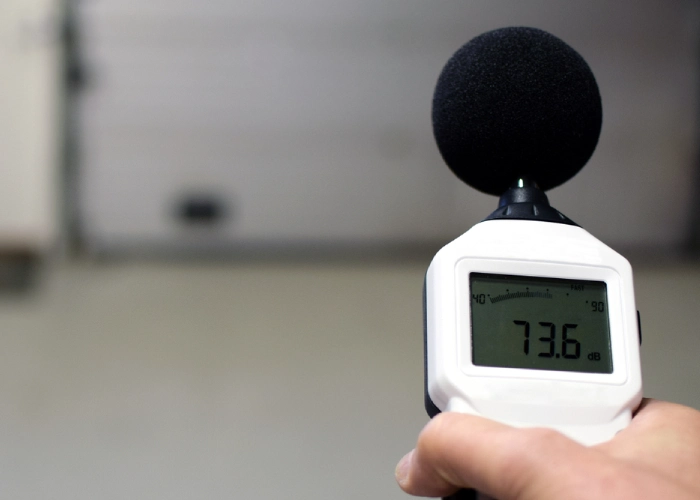When it comes to passing the sound test for your property, you need to understand the regulations and testing process fully.
When property owners organise a sound test, it can feel overwhelming, especially with the amount of information out there that you need to process. To help, we have come up with this easy-to-read guide that will help you to understand the process and what you need to do to be successful.

What Is a Sound Test?
Property owners have a duty to reduce the impact of excessive noise both inside a house and externally. A sound test is used to measure the level of sound that is transmitted and to pass a sound test, the levels of noise must come in under a specific level.
Two types of sound tests are used in the UK regulations for property owners: airborne tests and impact tests:
- Airborne tests focus on the noise level that is passed through party walls. It is tested by measuring a sound that is played through speakers in the property and measured in decibels from the other side of a wall to see the impact of the noise. The types of airborne noises that homeowners are affected by include TVs, radios and even people having conversations.
- Impact tests focus on the noise level that is passed through floors from one dwelling to another. This test focuses on measuring, in decibels, the level of noise that is transmitted when something hits the floor. Most testers use a tapping machine that drops hammers to create an impact. The noise is then measured from the floor below to note the impact. Everyday impact noises include people walking through a room, chairs being dragged across floors and items being accidentally dropped.
What Is the Regulation and When Is It Required?
Sound insulation testing falls under the Building Regulations Approved Document E and requires you to have testing carried out in line with ISO 16283 standards (which have replaced the older ISO 140-4 and ISO 140-7 standards, though these may still be referenced in some documentation).
For a new property, it must adhere to DnT,w + Ctr ≥ 45 dB (airborne) and L’nT,w ≤ 62 dB (impact), whereas a converted property must adhere to DnT,w + Ctr ≥ 43 dB (airborne) and L’nT,w ≤ 64 dB (impact).
Not all properties need to have sound insulation testing, and you will only need it if your property is:
- An apartment complex
- A residential development such as an HMO (House in Multiple Occupation)
- A hotel or hostel with sleeping accommodation (depending on use class)
- A semi-detached home
- A terraced home
- A converted home that offers more residences or office spaces than before
You do not need to worry about the test if your property is:
- A detached house
- A project that is refurbishing a property
How To Pass Your Test
The most obvious way of passing your sound test is to build a property with noise reduction methods. This does not mean spending over the odds on materials but planning in advance and purchasing sound-insulating items.

Soundproofing does not just mean the walls and floors alone; you will also need to remember to soundproof joists and gaps so that there is no way that excess sound can travel through the building, causing you to fail the test. It’s advisable to take expert advice from a sound specialist.
In addition to planning with soundproofing in mind, you will also need to ensure that you are ready for the test before you apply for it to be completed!
To be ready for the test you will need to ensure that all the walls, floors and ceilings have been finished and that all the windows and doors (internal and external) have been fitted and are closed. All sockets and switches will need to be installed and the skirting boards fully attached too.
You will also need to ensure that there is no heavy machinery operating during the test and that there is no one working on the site at the time of the test.
You will also need to ensure that there is access to power for the test to be carried out.
In most cases, rooms should also be empty and free from large soft furnishings (such as curtains, carpets, or furniture), as these can affect the accuracy of the results.
TIP: The Renters Rights Bill 2025: A Guide for UK Landlords
You should now feel confident and able to pass the sound test and understand the UK regulations. It is crucial that you do everything in your power to mitigate any issues before the sound test takes place so that you get the result you need the first time around.




